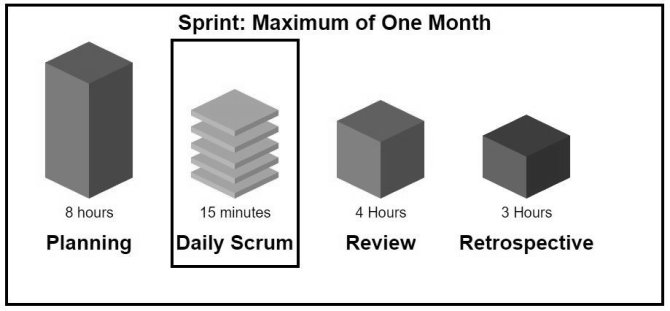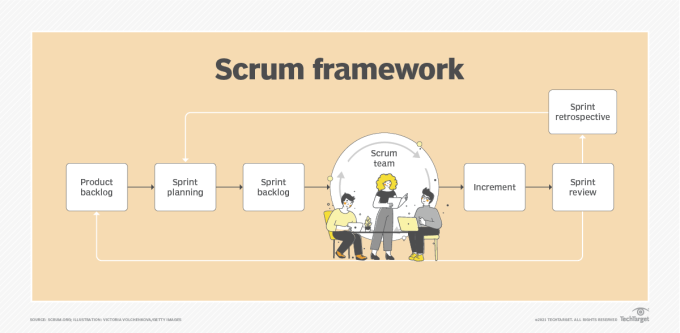Sprint vs Scrum: What's the difference?
How do Sprints and Scrum compare?
The key difference between a sprint versus Scrum is that Scrum is an Agile product development framework, while a sprint is a fixed-length development cycle Scrum teams use to incrementally develop a product. Sprints are a part of Scrum.
The most popular software development process in use today, Scrum self-identifies as a simple, intentionally incomplete, lightweight framework that helps teams solve complex problem.
Scrum doesn’t have a lot of rules.
The latest Scrum Guide is fewer than 5000 words. At its heart, Scrum simply insists upon the following criteria:
- Software development happens in sprints, which are fixed-length development cycles of a month or less.
- Each sprint starts with a short planning meeting to establish a sprint plan.
- The developers meet for a few minutes every day in what’s called a daily Scrum.
- A review meeting happens towards the end of a sprint to share victories with stakeholder.
- At the end of a sprint, the team conducts a sprint retrospective to reflect on how they can do better.
What is a sprint in Scrum?
In Scrum, sprints are a time-boxed container in which all other events occur. According to the latest Scrum Guide, “each Sprint may be considered a short project.”
One of the events that takes place during an Agile sprint is the daily Scrum. The sprint’s daily Scrum is the important ritual for which the Scrum framework is named.
A sprint’s daily Scrum is a quick, 15-minute meeting where developers discuss their progress, share concerns, motivate each other and potentially adapt their plans if unforeseen circumstances disrupt their quest to achieve the sprint goal. Only developers are expected to participate in the daily Scrum. Scrum masters and product owners aren’t required.
Scrum etymology
The daily Scrum gets its name from the sport of rugby, specifically during which opposing teams battle for the ball after a stoppage in play. In software and product development, the daily Scrum is used metaphorically to maintain or spark a project’s progress — to ‘get the ball rolling again.’

A sprint in Scrum is a container for all four of the required Scrum events.
How sprints work in Scrum
One of the biggest misconceptions Scrum Masters and Product Owners have about sprints and Scrum is that the term sprint only applies to Scrum’s development phase. Many people think that Scrum events such as planning, retrospectives and reviews happen outside of the time-boxed confines of Scrum’s sprint. That’s incorrect.
All four of Scrum’s prescribed meetings happen inside the scope of a sprint. Furthermore, when one sprint ends the next sprint starts immediately. In Scrum, nothing happens outside of the scope of a sprint.

Scrum is a lightweight framework that does development in fixed-length sprints.
Sprints in Scrum, SAFe, Agile and other frameworks and methodologies
While Scrum and sprints are two heavily intertwined topics, the concept of a sprint is not limited to Scrum.
The term sprint is used widely throughout Agile circles by teams that use a variety of development frameworks, processes and methodologies including SAFe, XP, Lean and Scrumbut. Every Agile methodology that does development in short, time-boxed increments to minimize risk regularly defines their short-term development horizon as a sprint.
The concept of a sprint is pivotal to Scrum, but the term is widely used throughout the world of software and product development.
Darcy DeClute is a Certified Cloud Practitioner and author of the Scrum Master Certification Guide. Popular both on Udemy and social media, Darcy’s @Scrumtuous account has well over 250K followers on Twitter/X.
| Jira, Scrum & AI Certification |
|---|
| Want to get certified on the most popular software development technologies of the day? These resources will help you get Jira certified, Scrum certified and even AI Practitioner certified so your resume really stands out..
You can even get certified in the latest AI, ML and DevOps technologies. Advance your career today. |



